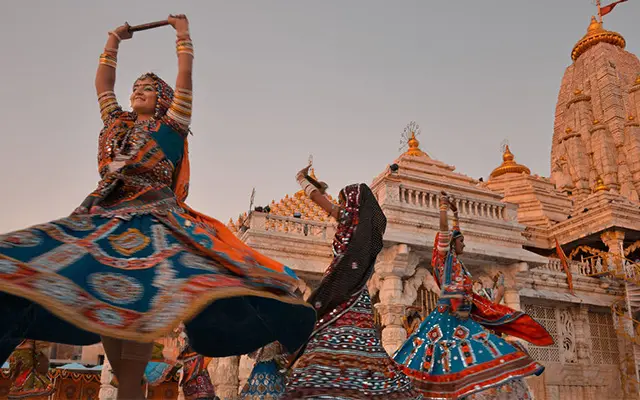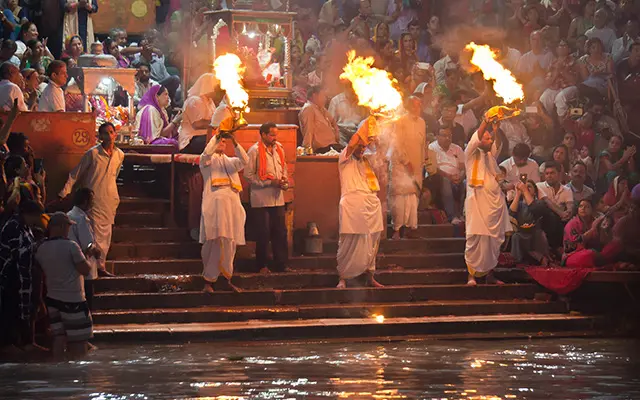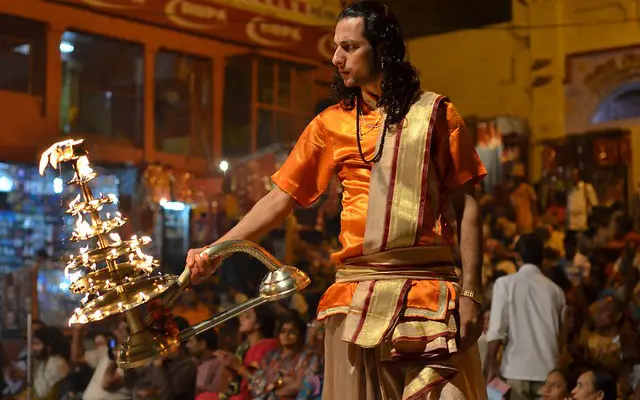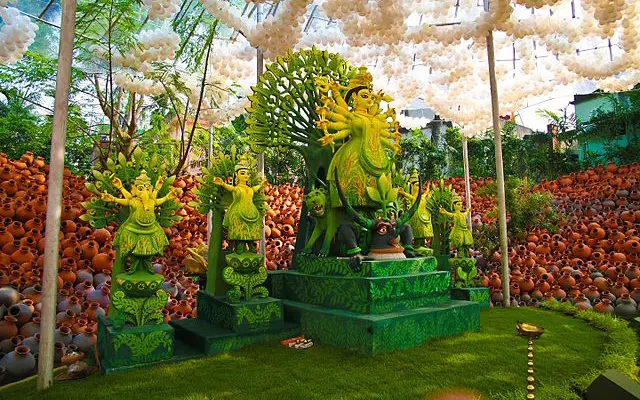What is Navratri & why it is celebrated?
Find out what is the symbolization of the Navratri festival and why is one of the most significant events in India.
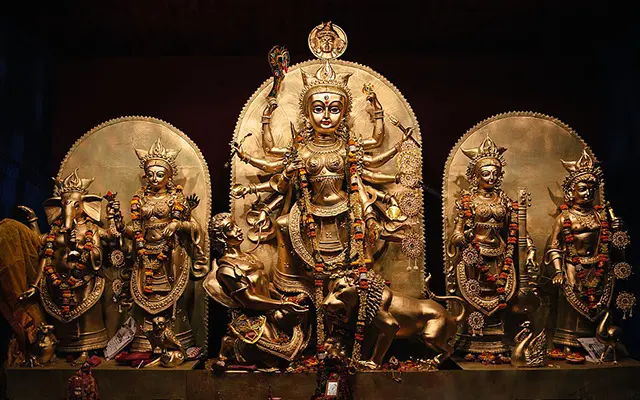
An art festival celebrating the victory of good over evil
Other Names
- Navarati
- Naurati
- Navarathri
- Navratam
- Nauratam
Navratri is one of the most significant Hindu festivals. Etymologically Navratri refers to its actual nice day (ten night) celebration since "nava" means nine and "ratri" means nights. It is observed four times per year, at the tipping point of the seasons, while it falls in the bright half of the Hindu lunisolar months.
The biggest and most popular is the post-monsoon called Sharada (Autumn) Navratri. Apart from its religious connotation, it includes a thanksgiving aspect given that it is celebrated during or just after the harvest period (September-October).
The second most celebrated Navratri is Vasanta that means spring. It is also called Chaitra since it falls on the Hindu calendar month Chaitra that corresponds to March or April.
Magha and Ashada Navratri fall on January–February, and June–July accordingly.
The festivity of Sharada Navratri is movable and starts on the new moon day of the Hindu calendar month Ashvin. That corresponds to a 30-day period between the 25th of September and the 15th of October on the Gregorian Calendar. This colorful nine-night / ten-day festival of the Hinduism religion honors the feminine Goddess Durga and it is celebrated in various forms and ways across the different regions of the country.
India has two million gods, and worships them all. In religion all other countries are paupers; India is the only millionaire.
Navratri means literally «nine nights» in Sanskrit
Each day of the celebration process is associated with an incarnation form of the Goddess and all the nine avatars are worshiped during the festivity. Depending on the region, the celebrations contain fireworks, pandal parades, and rituals as well as folk dances, stage decorations and chantings of Hinduism scriptures. For many communities indicates a time for feasting and dancing while for others is a period of reflection and fasting. The fasting customs include a strict vegetarian diet and abstaining from alcohol and certain spices.

Symbolization of Navratri
Navratri is celebrated with devotion, enthusiasm, and joy throughout India. The autumn celebration Sharada Navratri worships Goddess Durga and through a series of narratives signifies:
- The victory of good over evil
- The female power
- The creative power represented via the three forms of the Goddess
The victory of good over evil
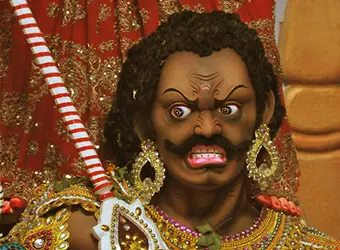
The victory of the good is demonstrated while Goddess Durga kills the bull demon Mahishasura and Lord Rama kills King Ravana who kidnapped his wife Sita.
The battle between divine and demonic beings is a fundamental element of the Hinduism religion. The divine existences are those who show a progressive way towards an ideal and grander society while the demons obstruct this progress through the harmful factors such as lust, greed, and envy.
The eternal clash between the forces of light and darkness implies the constant human effort to avoid the influence of harmful characteristics that can prevent someone to achieve a better life.
The female power
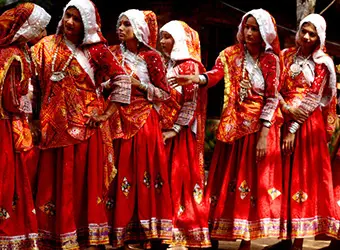
The power of women is illustrated through the Goddess Durga whose name means impassable and according to the explanation of Alain Daniélou "beyond defeat".
She is a protective mother and a warrior who defeats evil and demonic forces that threaten peace and prosperity.
Women have a prominent role at the celebration as well as at the worshiping of the Goddess. Their feminine qualities are expressed through activities like dance, music, and decoration. Another symbolization related to female power implicates harvest and fertility.
Given that the festival is taking place close the end of the summer harvest season, it includes a thanksgiving aspect and signifies an ideal moment to celebrate the good harvest.
The creative power represented via the three forms of the Goddess
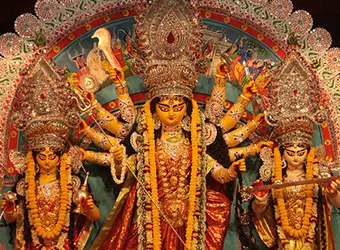
Finally, the creative power is praised by glorifying the three different divine forms of the divine. On this way, the celebration is divided into sets of three days that worship each one of the three different aspects of the supreme Goddess.
The first three days are dedicated to Durga (warrior) who represents the powerful force against people's vices, impurities, and weaknesses.
The next three days observe Lakshmi (fortune, wealth) who offers to believers fortune, wealth and prosperity.
During the last three days of the feast the Goddess is adored in the form of Saraswati (knowledge) who is the source of wisdom.
